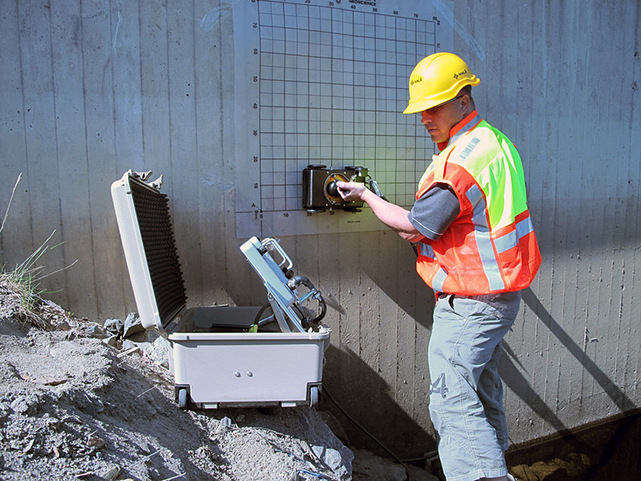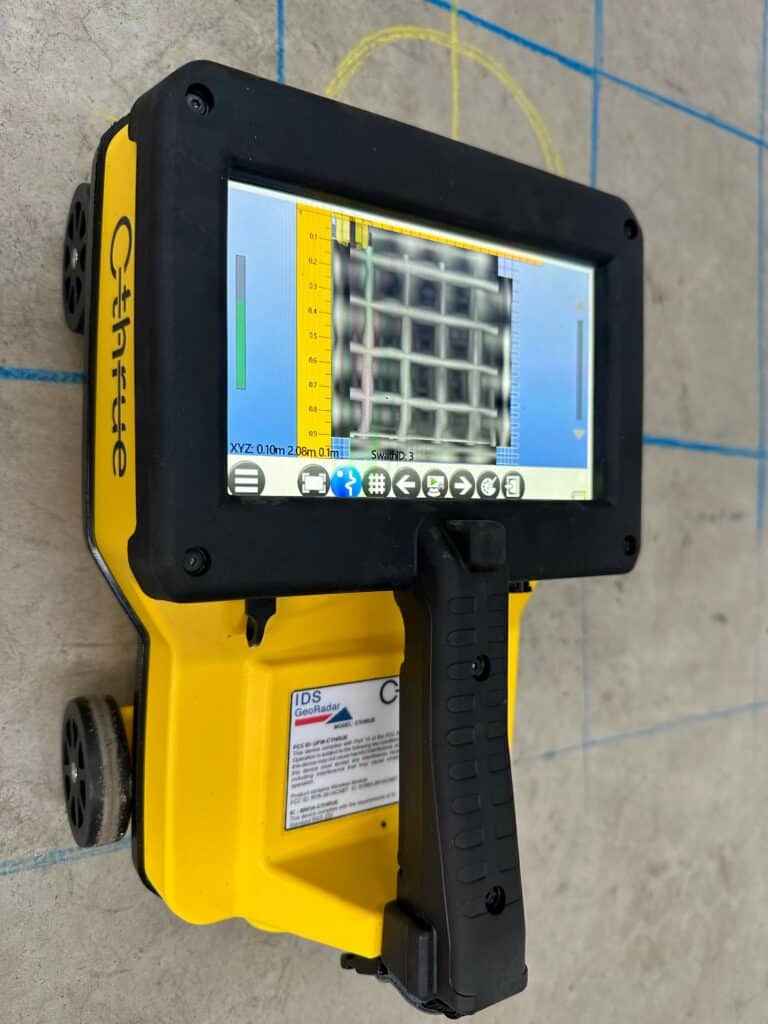Unveil the Transformative Power of Concrete Scanning in Optimizing Performance and Safety And Security
Concrete scanning has actually emerged as an essential tool in the construction sector, using unparalleled benefits in enhancing task efficiency and ensuring safety and security criteria. The transformative power of concrete scanning exists in its ability to provide real-time data and thorough understandings, changing exactly how jobs are prepared and carried out.
Significance of Concrete Scanning
Making sure the structural integrity and safety and security of construction projects begins with the critical step of performing thorough concrete scanning. Concrete scanning is a non-destructive technique utilized to detect and map subsurface elements within concrete structures. This process is crucial in identifying potential hazards, such as rebar, post-tension cable televisions, and channels, that might be hidden within the concrete. By making use of innovative innovations like ground-penetrating radar (GPR) and electro-magnetic induction, construction teams can precisely situate these elements without creating any kind of damages to the structure.
The relevance of concrete scanning can not be overstated, as it plays an important duty in avoiding crashes, decreasing task hold-ups, and making certain the lasting toughness of the building. By recognizing potential threats before the building stage begins, building contractors can carry out appropriate precaution and make educated choices relating to the layout and execution of the job. Furthermore, concrete scanning aids in maximizing project timelines and spending plan by preventing unforeseen prices and hold-ups that may occur because of unexpected blockages within the concrete. Ultimately, spending in comprehensive concrete scanning is an aggressive approach that improves both effectiveness and security in building and construction tasks.
Exactly How Concrete Scanning Works
Concrete scanning runs as an important device in building and construction jobs by employing innovative technologies to identify and map subsurface elements without causing architectural damages. Ground Permeating Radar (GPR) and Electromagnetic Induction (EMI) are 2 primary approaches utilized in concrete scanning. GPR jobs by producing high-frequency radar pulses into the surface area, which get better when they encounter subsurface objects or voids. The moment considered the signal to return suggests the depth and place of the objects. EMI, on the other hand, makes use of electromagnetic areas to recognize variations in product make-ups, such as identifying rebar or conduits within concrete structures.
During the scanning process, the data accumulated is examined in real-time, permitting prompt recognition of potential dangers or obstacles below the surface. By utilizing these advanced innovations, concrete scanning dramatically lowers the danger of expensive problems and injuries on building websites.
Benefits of Concrete Scanning
Utilizing sophisticated scanning modern technologies in building projects uses a wide variety of benefits, enhancing both efficiency and safety and security on-site. Among the primary benefits of concrete scanning is the capability to discover and find embedded items such as rebar, post-tension cables, and avenues properly. By recognizing these aspects before drilling or reducing right into concrete structures, the risk of unintended strikes is dramatically lowered, protecting against prospective injuries to employees and damages to the structure itself. Concrete scanning aids in planning and designing more effectively, as it offers precise info concerning the location and deepness of structural elements.

Instance Research Studies: Concrete Scanning Success

In one more case, a building business used 3D concrete scanning to analyze the problem of aging concrete frameworks in a historical building. The in-depth scans given beneficial understandings into the extent of degeneration and aided prioritize upkeep efforts effectively. By proactively resolving areas of problem recognized with scanning, the company had the ability to extend the life expectancy of the structure and guarantee resident safety and security.
These study emphasize the transformative power of concrete scanning in enhancing performance, accuracy, and security in building and construction tasks.
Executing Concrete Scanning in Projects
Applying sophisticated scanning technologies during building projects has come to be significantly crucial for improving precision and safety and security. By integrating concrete scanning into task planning and execution, building and construction teams can recognize prospective dangers, such as rebar or post-tension cables, concealed within concrete frameworks. This aggressive technique decreases the threat of crashes, hold-ups, and costly rework, inevitably resulting in a lot more effective job timelines his response and budget plans.
To apply concrete scanning effectively, project managers should collaborate carefully with seasoned scanning professionals to figure out one of the most suitable scanning methods for the details job needs. Involving scanning experts from the very early stages of a job allows the team to produce extensive scanning strategies that address vital areas of problem and make sure thorough data collection.
Moreover, including concrete scanning into normal project process can simplify decision-making procedures, as real-time check information offers prompt insights into the problem of concrete structures - Concrete Scanning. This data-driven technique promotes informed analytic and allows teams to make changes quickly, promoting a society of efficiency and safety throughout the project lifecycle

Conclusion
In final thought, concrete scanning plays an important role in enhancing efficiency and security in building tasks. By using advanced innovation to find and map out underlying structures within concrete, this procedure helps to avoid pricey mistakes, ensure structural honesty, and decrease threats on site. With the ability to reveal covert elements and provide accurate information, concrete scanning shows to be a beneficial device for optimizing task end results and making the most of overall success.
Concrete scanning is a non-destructive method made use of to detect and map subsurface aspects within concrete structures. Furthermore, concrete scanning helps in maximizing job timelines and budget by preventing unanticipated expenses and delays that may arise due to unpredicted obstructions within the concrete. One remarkable situation study entails a large improvement job where concrete scanning played an essential role in guaranteeing task success.In an additional instance, a building business used 3D concrete scanning to examine the condition of maturing concrete structures in a historical building. By integrating concrete scanning right into task preparation and implementation, building and construction teams can recognize possible threats, such as rebar or post-tension cable televisions, concealed within concrete frameworks.